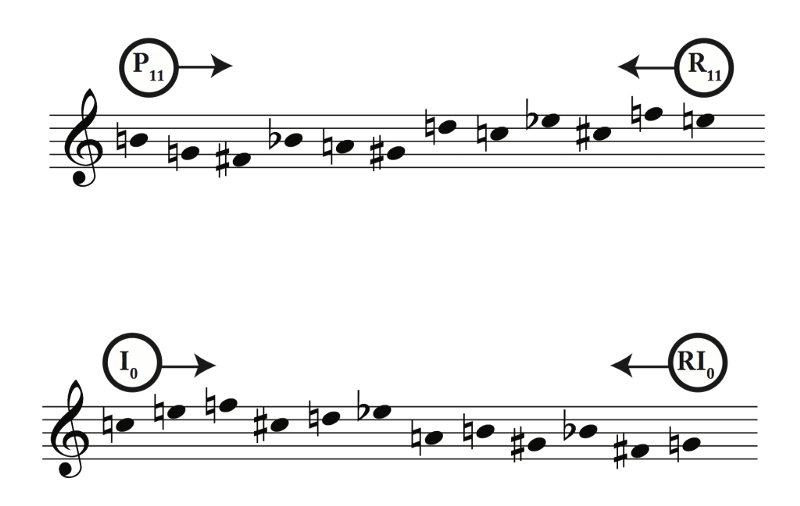Before we start exploring the definition attached to the 12 tones in music, let us look through its origin and the significance that has been attached to it over the years. The inception of the 12 tone music can be traced back to circa the First World War where it was initially written and composed as a large body of music to maintain the equality of tones. The most common association of 12 tone techniques is that with the style known as serialism and is used to refer to the order of the components involved in music composition including the duration, dynamics, pitches, tunes, and all the others. On narrowing down our focus, we will find that the 12 tone composition is essentially referred to as the music that has been based specifically on the ordering of the twelve pitch classes.
The Origin
There are several other denominations attached to the twelve-tone technique like twelve-tone serialism, twelve-note composition, and dodecaphony, and all these terms rightly justify the purpose of the arrangement. This musical composition was first devised by the stalwart of Austrian music, Arnold Schoenberg who believed that if all the 12 notes of the chromatic scale (the chromatic scale is the musical scale which contains all the 12 pitches, where each of the semitones are above or below its adjacent pitches) are brought in harmony with one another, it will produce unprecedented pieces. Unlike all the other major forms of traditional or even in that case unconventional music, no single tone enjoys the privilege of being at the pivot predominating the others; also, there is no significant process that assigns importance to these individual tones. Therefore, all the 12 notes of music are attended by an equal degree of importance at a time and the music steers away from being on a key. According to Schoenberg himself, the 12 tone music is the procedure of delineating a piece of music where all the twelve tones of it are related to one another and can be evaluated accordingly.
Influence
This pattern of music composition was greatly celebrated during the 20th century and all the leading composers of the time resorted to this technique to generate an inevitably hit album. All the major ideas that revolved around it not only influenced the musicians and serials of that time but left a huge impact on the music that is being still written today.

Technical forms
Now coming to the technical bits of it, the 12 tone music is particularly founded on a series which is sometimes also known as a row and all the twelve pitches involved in it are contained in the same order. When composers follow this method creating this music, they do not rely upon a single series for all the twelve tones encumbering it; the idea is to usually create an individual row for the each of these pieces; these individual series, on the other hand, makes way for the unifying factor that holds together the 12 varying tones. As far as the basic order of the composition is concerned, it is known by the name of basic set evidently because all the 12 tone series are based on the same principle and are synonymous with one another.
Before we move on any further, let us clarify that the basic set, around which our concern revolves around in the present is not a theme because as we have already mentioned, it is not accompanied by any specific rhythm, shape or loudness- the basic factors that characterize a composition. This is treated as the basic foundation of any music, an idea that circulates around the composition that is using it in the first place. The set that is recognized as the basis in the 12 tones is not always preferable to hearers because of several reasons, one of which is that it has undergone several alterations since the time it evolved. The principles involved in relating the composition and the set that was prescribed by Schoenberg initially have been called out for being mathematical and unjustifiable. This technique involves four basic postulates which are applicable to the basic series or the worked formulated by the section. In the following bit, we will be jotting down the specifications for better understanding:
- The row is maintained as the specific and equal ordering of all the twelve tones or notes present in the chromatic scale without any subscription to the octave placement.
- In one single row, no note is used more than once.
- One row can include interval-preserving transformations, meaning, there is a chance for them to appear in inversion (denoted with an I), retrograde (denoted with an R) or even the coupling of retrograde inversion (shown as RI). All these transformations exist alongside the set’s “original” or prime form (shown as P).
- Particularly in these four transformations, the row that is to be equaled can begin from any degree on the chromatic scale- this directly reinforces the fact that they can all be invariably transposed. With transposition we mean, it is an interval-preserving transformation that is covered by 3. If you are looking for a transposition, you will find them marked with an integer from 0 to 11 which means that they are the 12 different numbers in the 12 semitones in the chromatic scales. Therefore, if the original variant of the row is marked by P0, then the upward transposition will be depicted by the P1 semitone. Similarly, in the case of the retrograde and Inversion, if the R0 and I0 are the base markings, the upward semitones will be denoted by R1 and I1.

Keep in mind that these rules apply when the construction of the row is being conducted and not essential to the interpretation of the row revolving around the composition. These techniques are put forward in the creation in the literal sense where the piece contains a sequence of statements of row forms- they can be placed alongside one another, overlap each other thereby opening doors for creating harmony in the 12 tone music.

